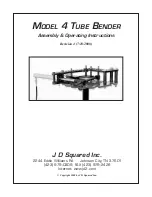
70
Refer
ence
Function List
164
InsEFCnct
Insertion Effect Connection
Type
Determines the effect routing for Insertion effects 1 and 2. The setting
changes are shown on the diagram in the display, giving you a clear picture
of how the signal is routed.
para...parallel
*52
165
Ins1Ctgry/Type
Insertion 1 Category/Type
Determines the effect type for Insertion 1 and 2. Refer to the Effect Types List
in the separate Data List.
166
Ins2Ctgry/Type
Insertion 2 Category/Type
167
ReverbType
Reverb Type
Determines the effect type for Reverb. Refer to the Effect Types List in the
separate Data List.
168
Reverb/ChoSend
Reverb Send/Chorus Send
Determines the level of the sound (from Insertion 1 or 2, or the bypassed
signal) that is sent to Reverb/Chorus effect. A setting of “0” results in no
Reverb/Chorus processing of the sound.
169
Reverb/ChoRtn
Reverb Return/Chorus
Return
Determines the Return level of the Reverb/Chorus Effect.
170
Reverb/ChoPan
Reverb Pan/Chorus Pan
Determines the pan position setting for the Reverb/Chorus effect.
L64 (hard left) ~ c (center) ~ R63 (hard right)
171
ChoToRev
Send Chorus to Reverb
Determines the Send level of the signal sent from the Chorus Effect to the
Reverb Effect.
172
VoiceEF1-4Part/
InsEF
Insertion Effect Part
(Voice)
Determines the part to which the Insertion effect is applied. The Insertion
connection type (page 23) depends on the voice of the selected part.
173
ChoCtgry/Type
Chorus Category/Type
Determines the Chorus effect type. Refer to the Effect Types List in the
separate Data List.
174
(Effect
Parameters)
Effect Parameters
The number of parameters and values available differs depending on the
currently selected effect type. For more information, see the Effect Parameter
List in the separate Data List.
-
175
PolyExpand
Poly Expand
This parameter is accessible only when you have two identical Plug-in boards
installed. The “off” setting enables two boards to work separately (you can
select them in two different Parts). When this is set to “on,” the two boards
effectively function together as one board (used in a single part) — giving you
double the amount of polyphonic notes you can play at one time.
-
176
PortNo.
Port No.
Determines the MIDI Port number over which the Plug-in board receives MIDI
data. One port can be set for the Multi-part Plug-in board and one port can
be set for the Single part Plug-in board.
177
RcvGM/XG
Receive GM/XG
Determines whether “GM on” and “XG on” messages are recognized (on) or
not (off). This parameter is available only when the Multi-part Plug-in board
has been installed to PLG2.
-
178
Type
EQ Type
Determines the Equalizer Type. The MOTIF-RACK features a wide selection of
various equalizer types, which can be used not only to enhance the original
sound, but even completely change the character of the sound. The
particular parameters and settings available depend on the specific
Equalizer Type that is selected.
-
*53
179
L.Freq/Gain
(Freq1/Gain1)
(Type=EQ L/H)
EQ Low Frequency/Low
Gain
-
*12
180
M.Freq/Gain
EQ Mid Frequency/Mid
Gain
-
181
H.Freq/Gain
(Freq2/Gain2)
(Type=EQ L/H)
EQ High Frequency/High
Gain
-
182
Freq (Type=P.EQ)
Frequency
-
183
Gain (Type=P.EQ)
Gain
-
184
Q (Type=P.EQ)/
M.Q
EQ Resonance/
Mid Q
-
185
Tune
Master Tune
Determines the pitch of the MOTIF-RACK in fine one-cent steps
(100 cents: one semitone).
-
Ref.
#
Display
Parameter Name
Explanation
Related
Page
Summary of Contents for MOTIF-RACK
Page 1: ...TONE GENERATOR ...
















































